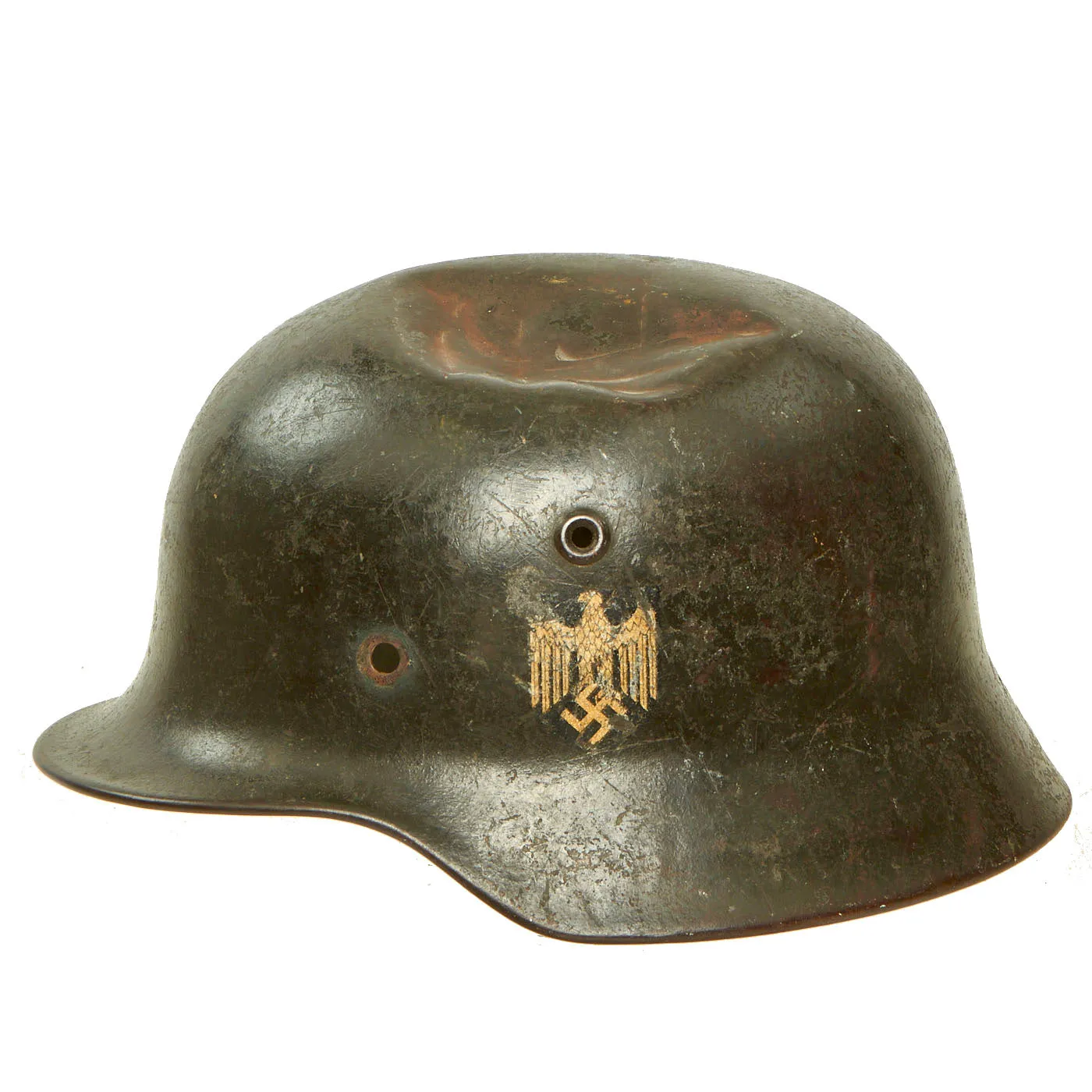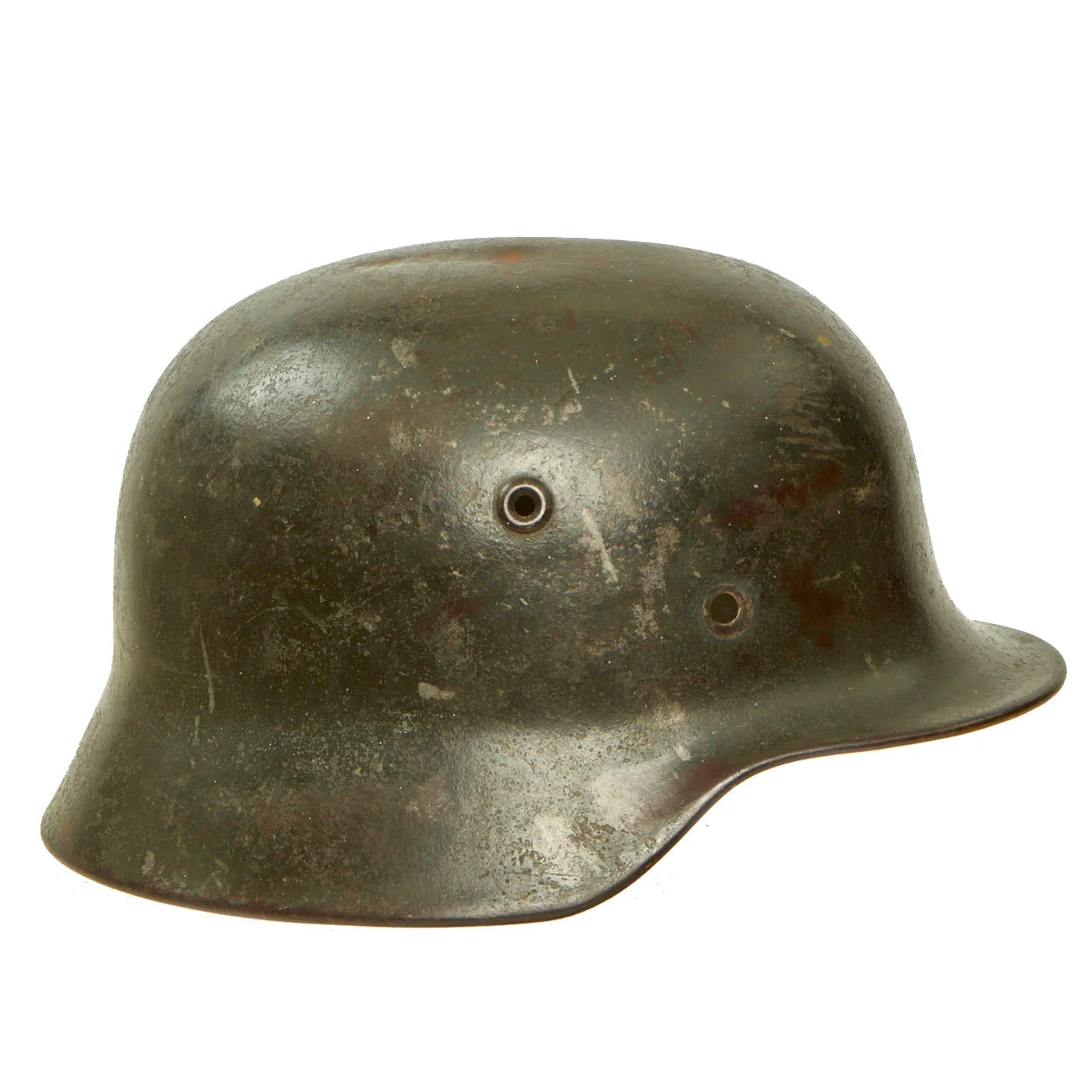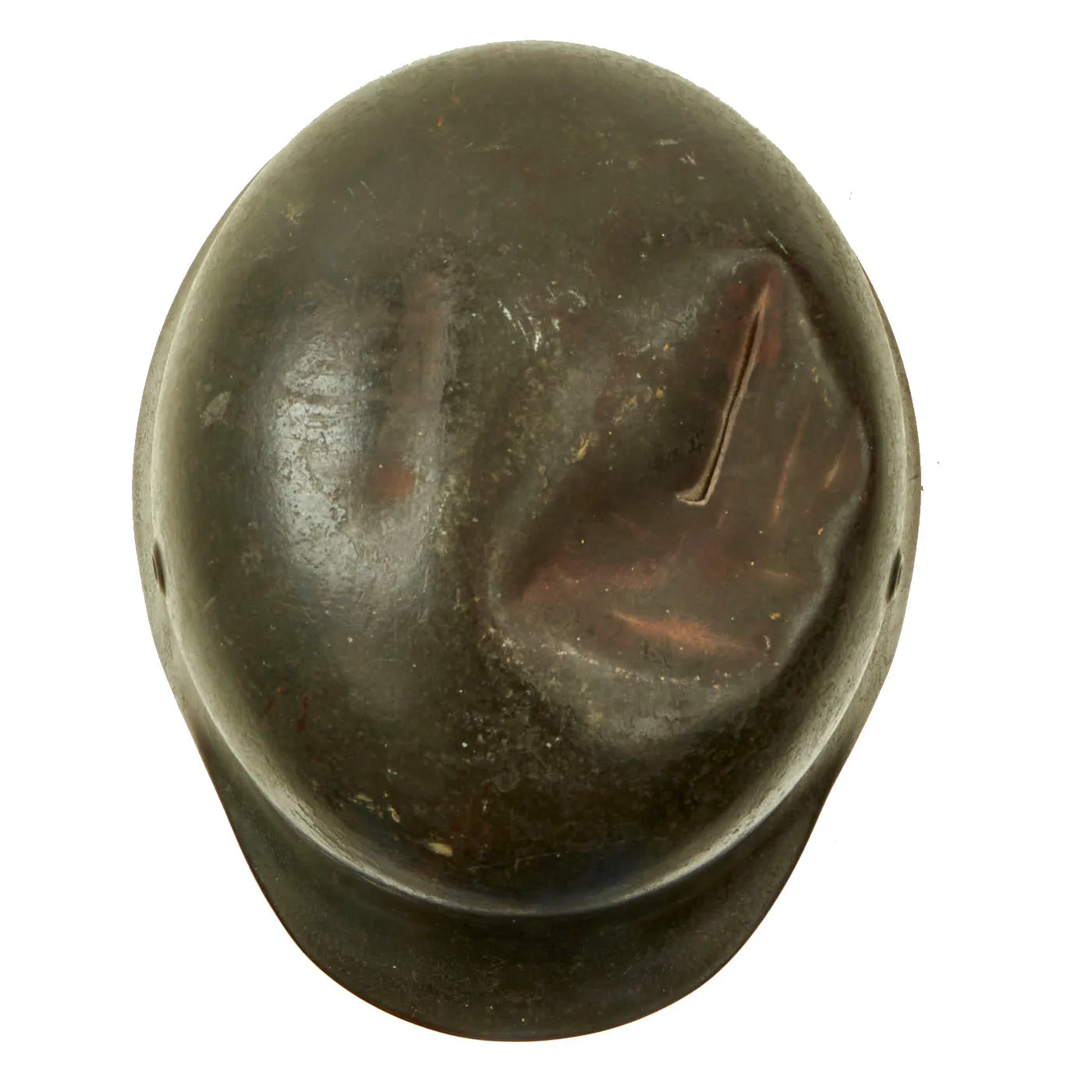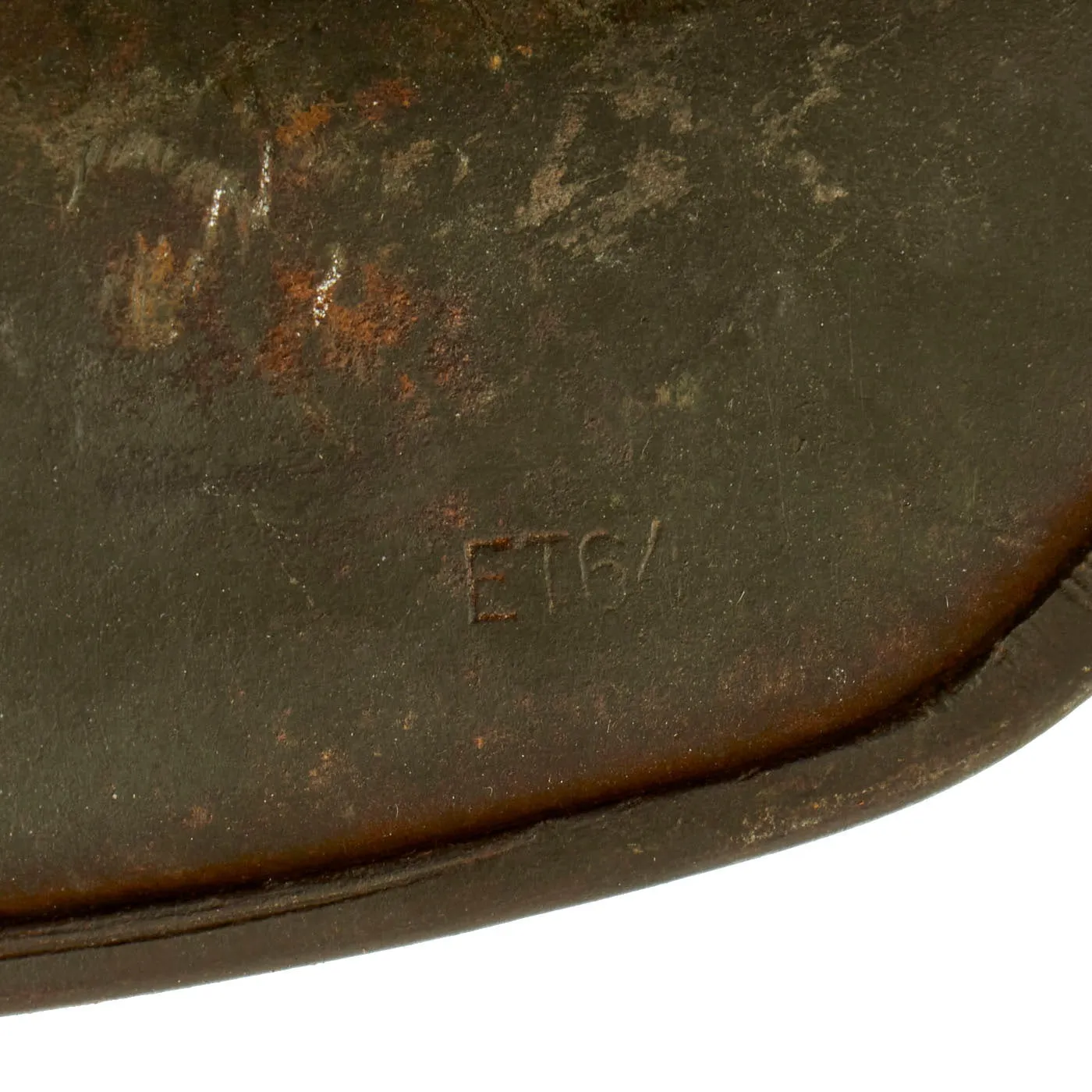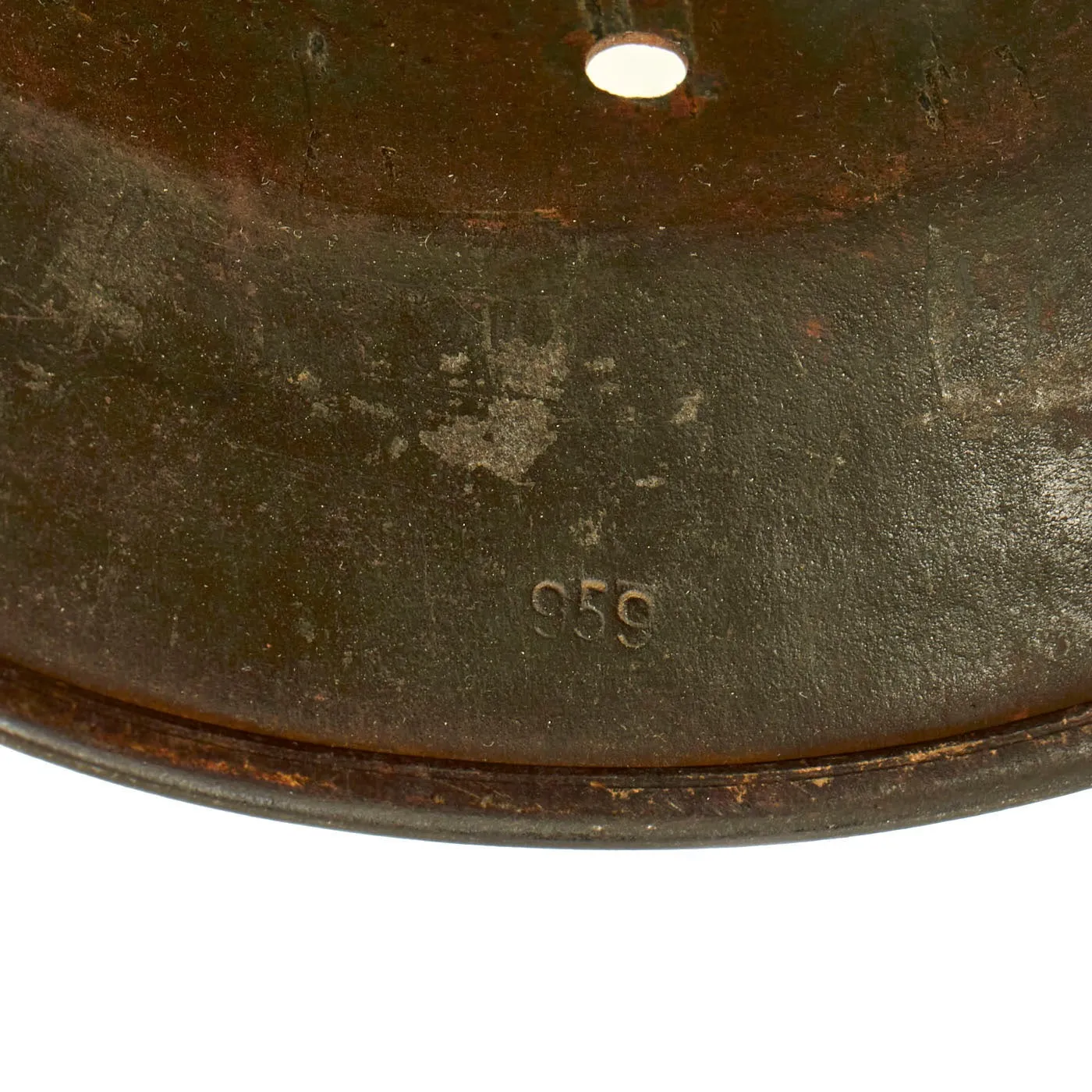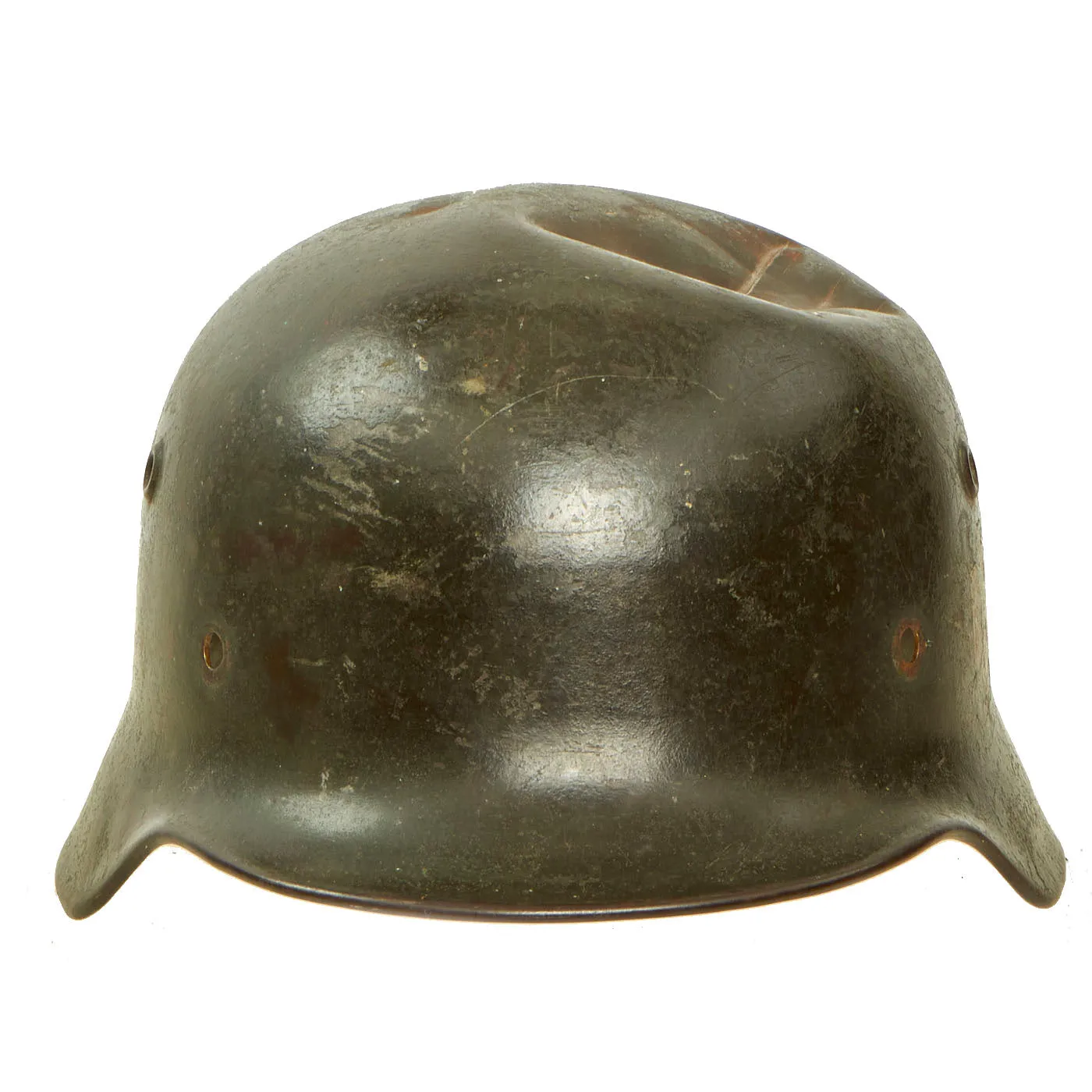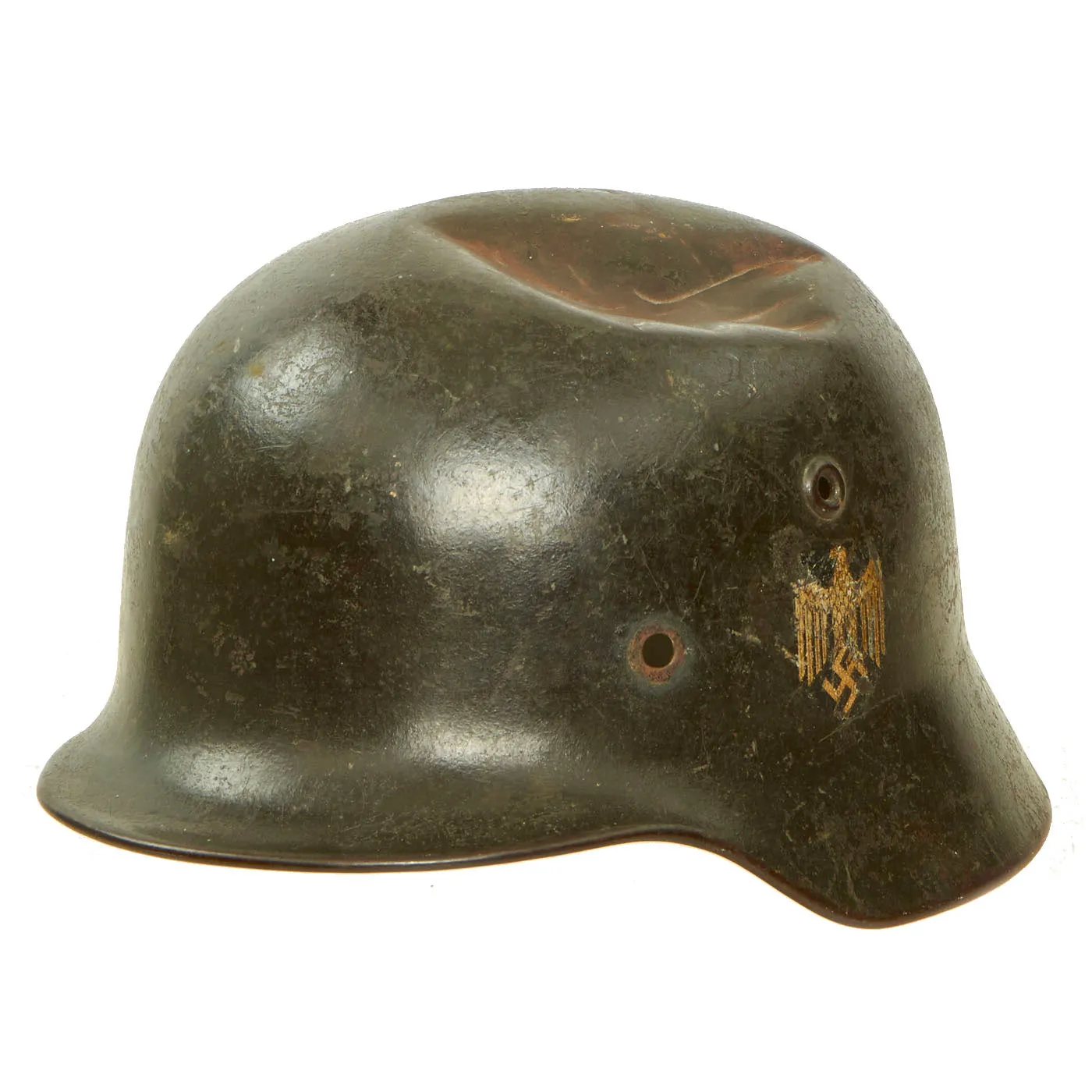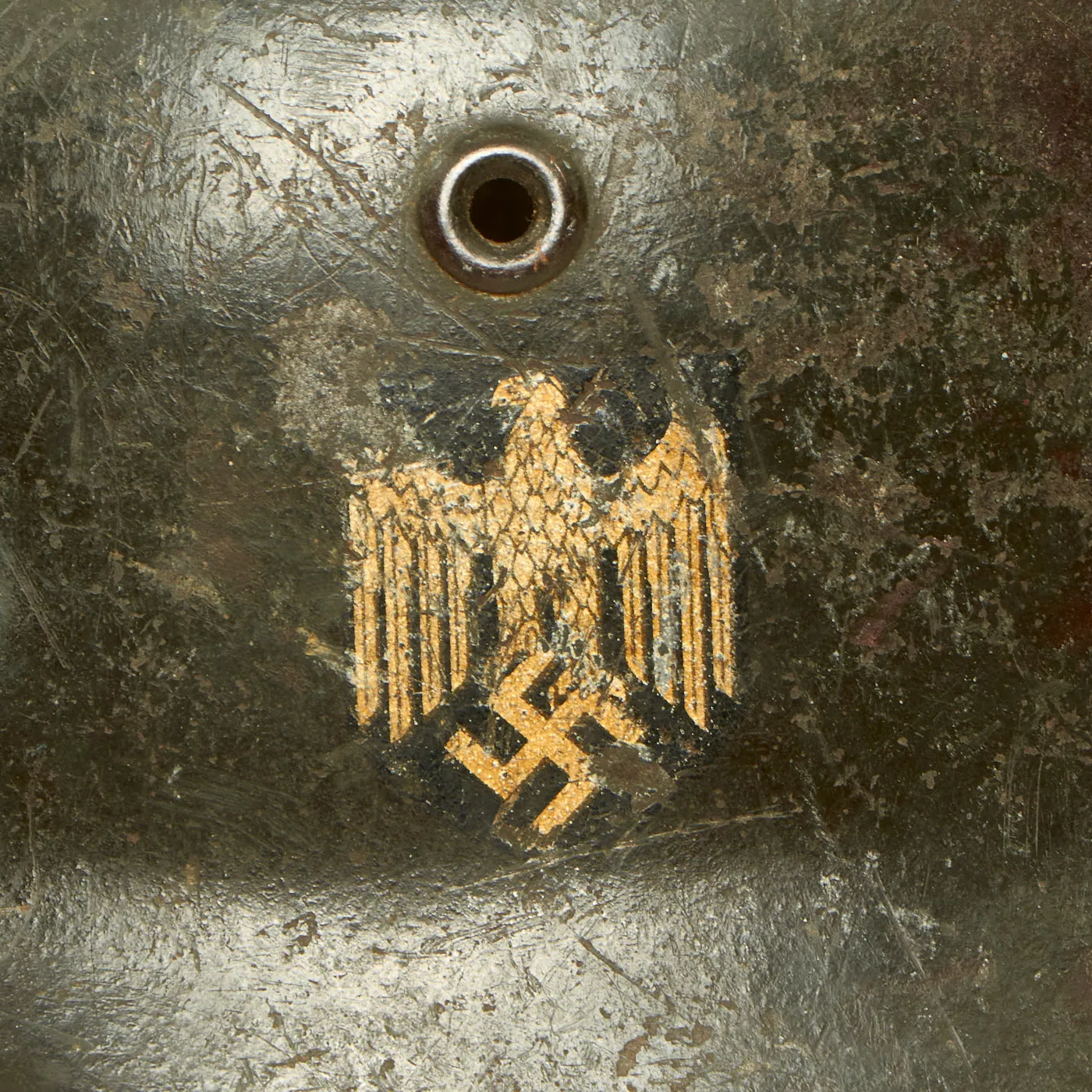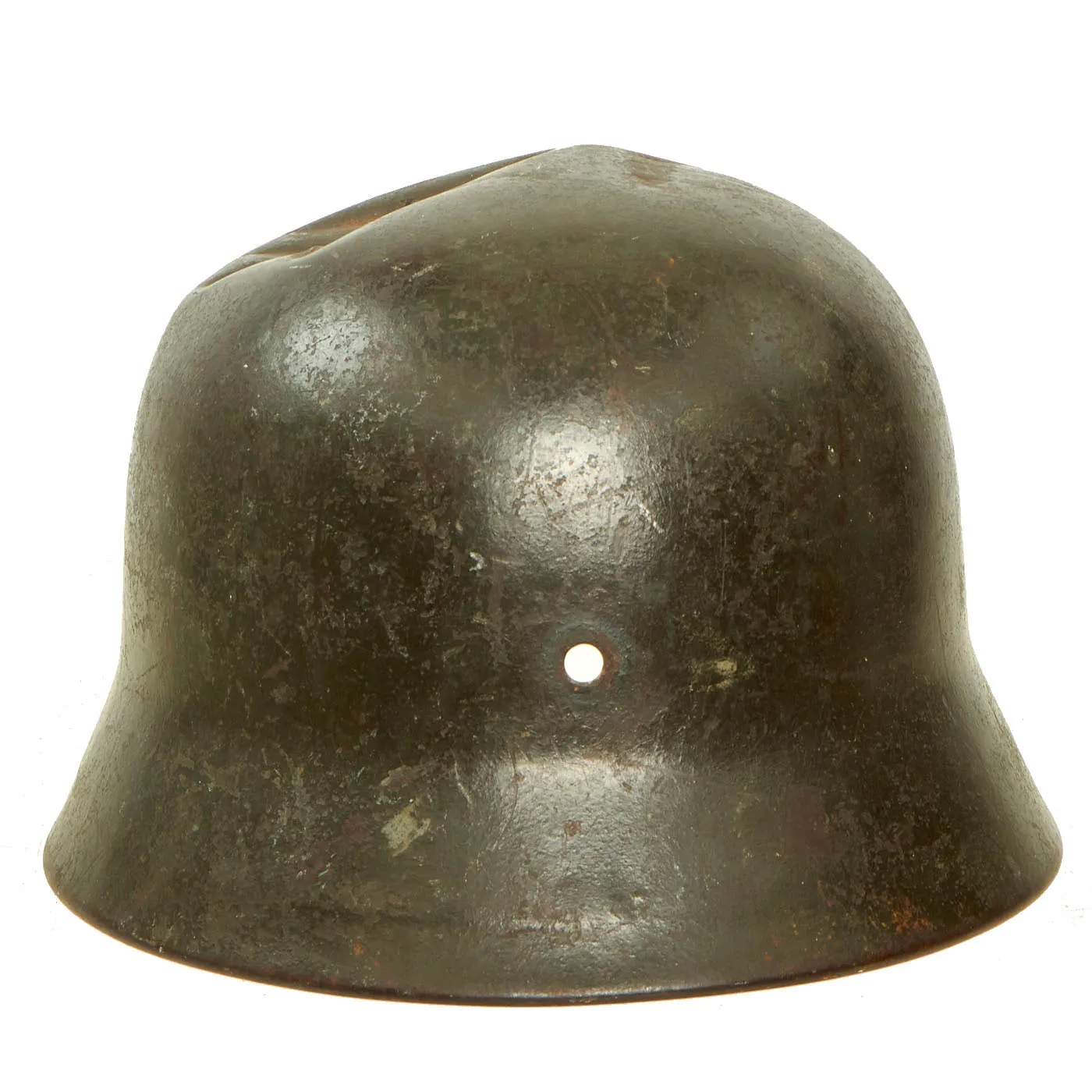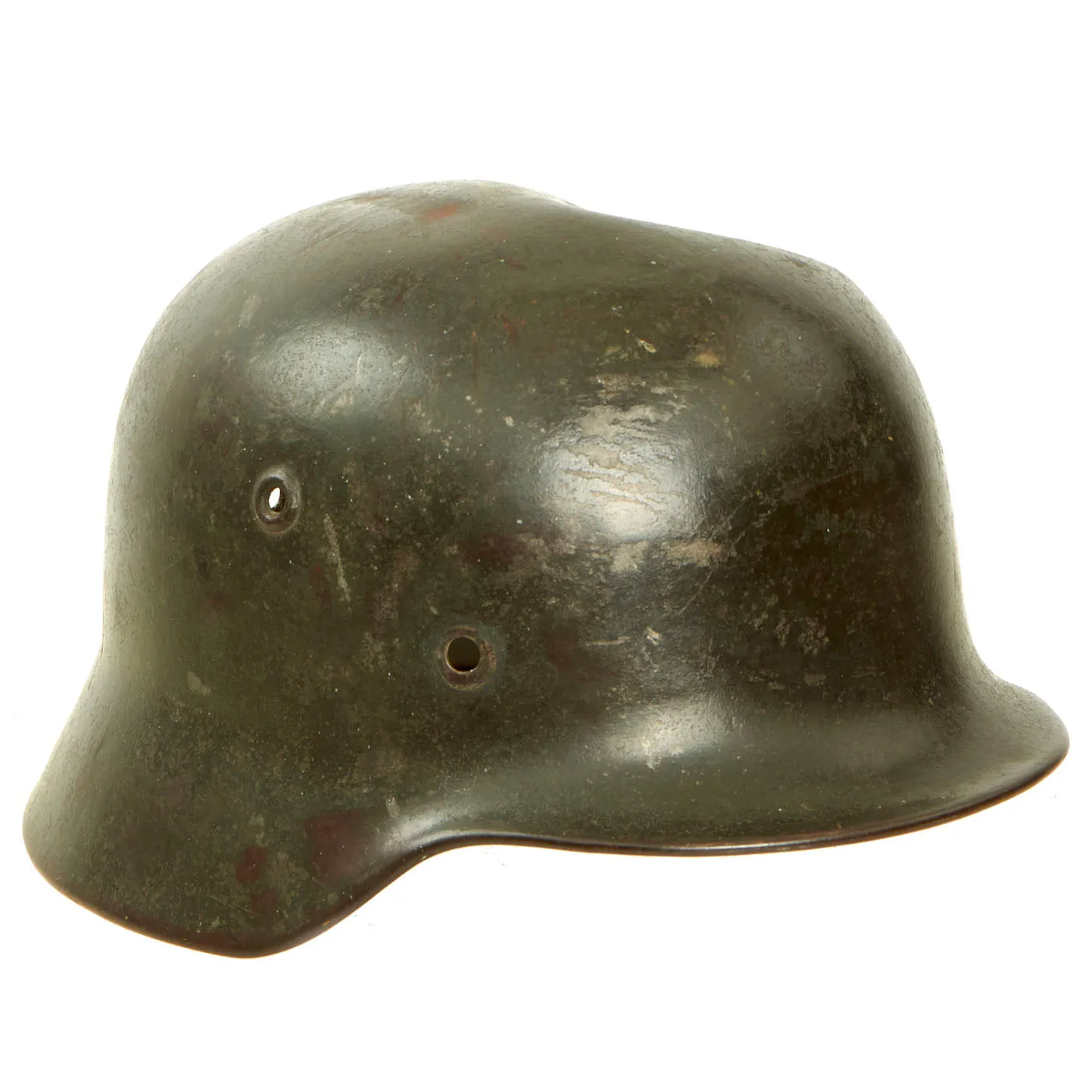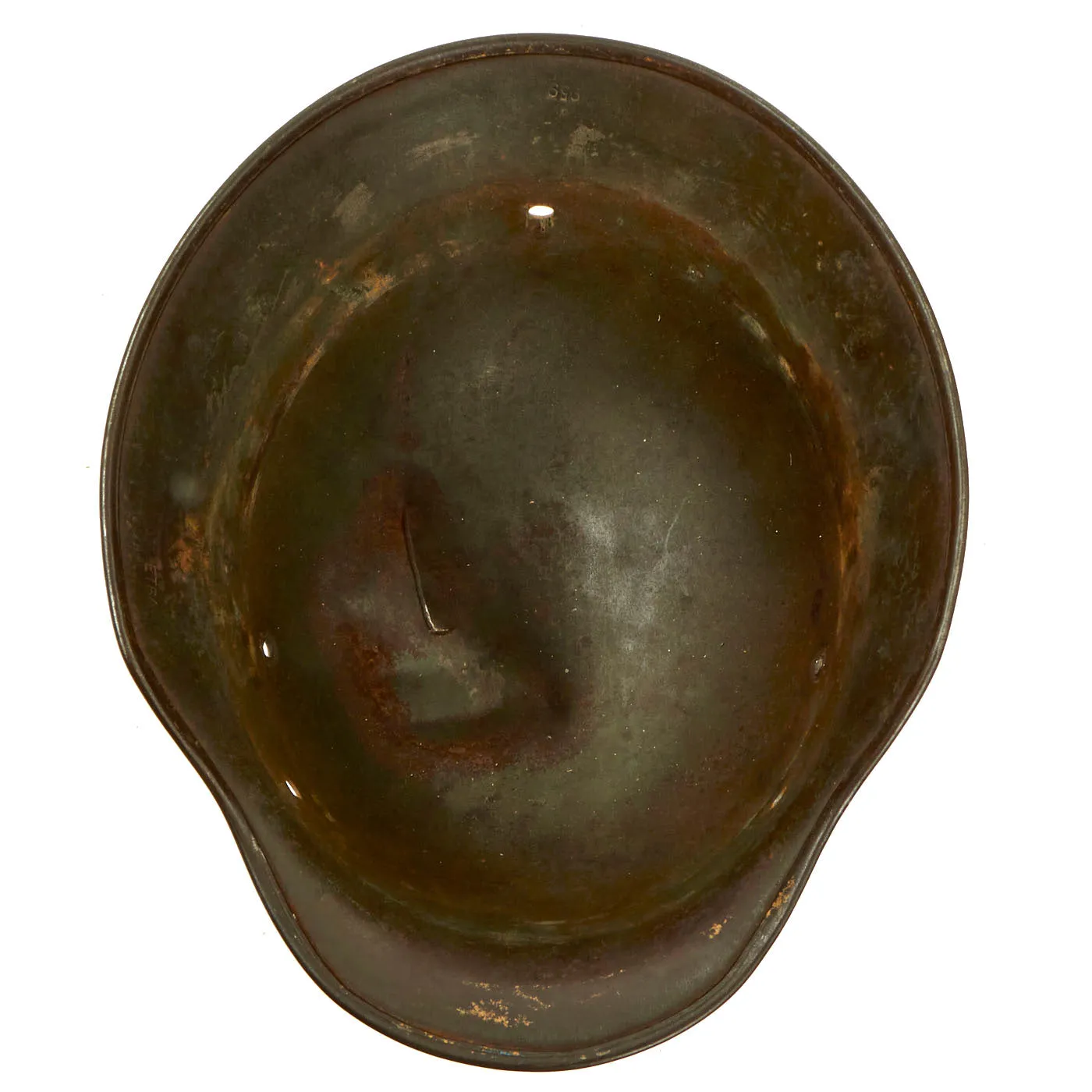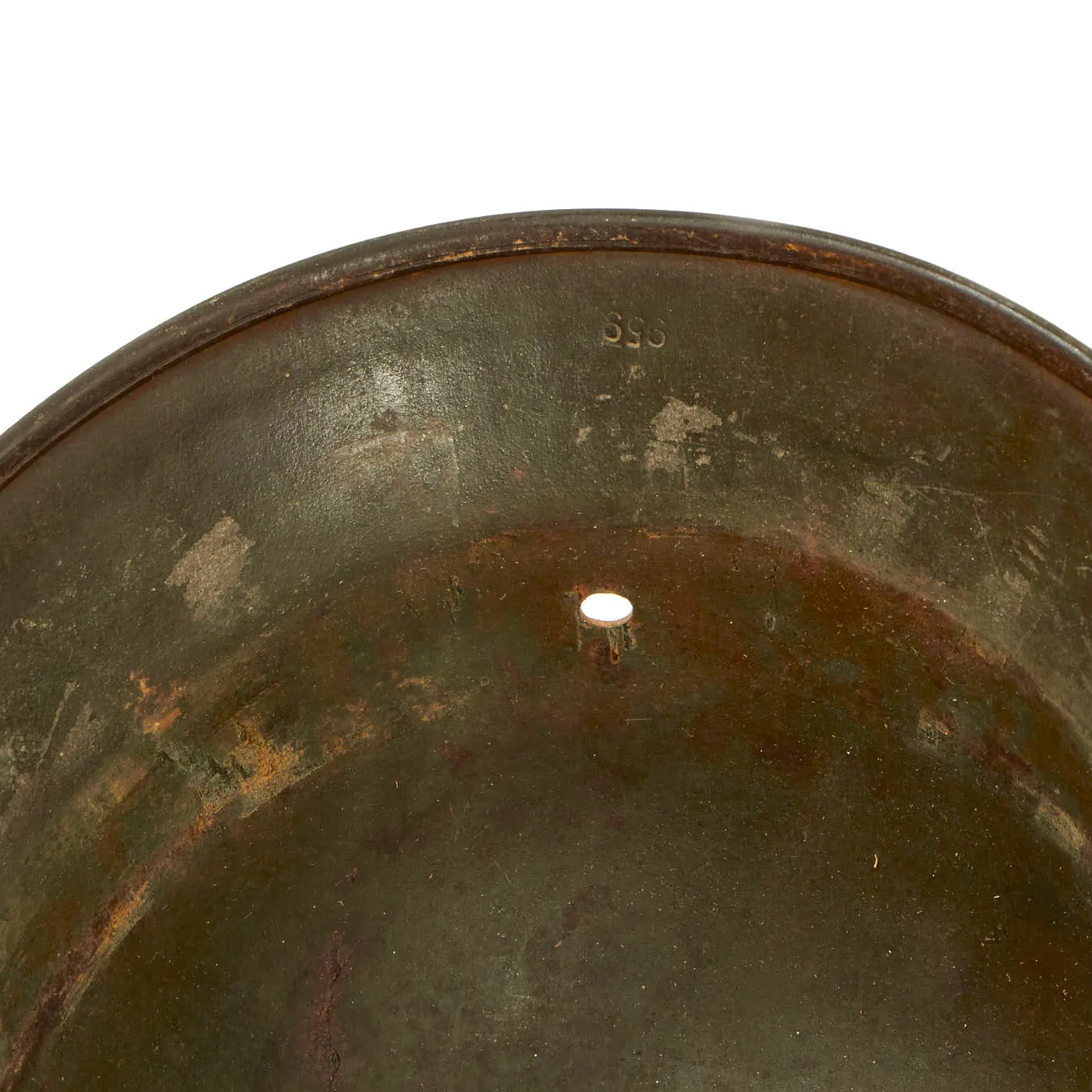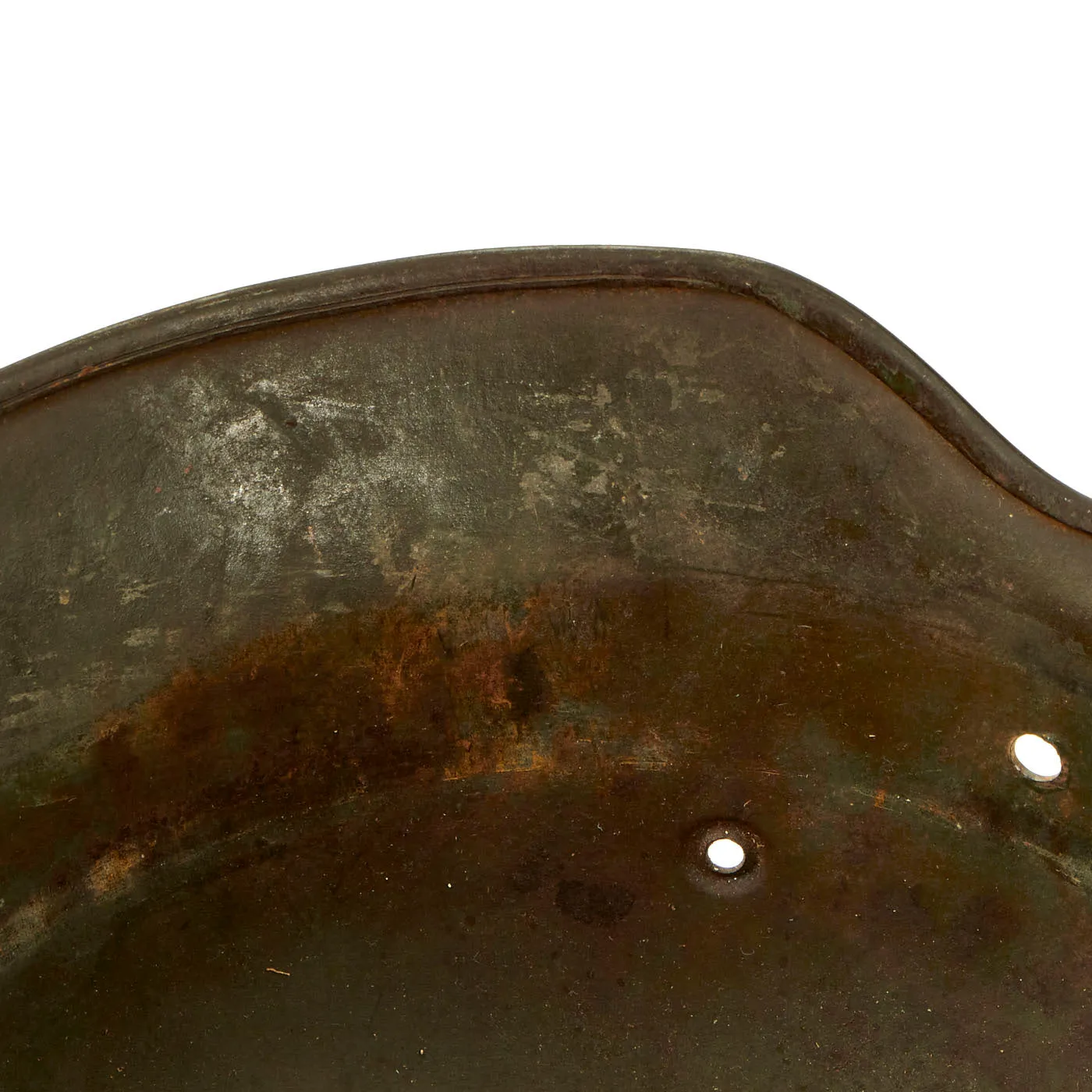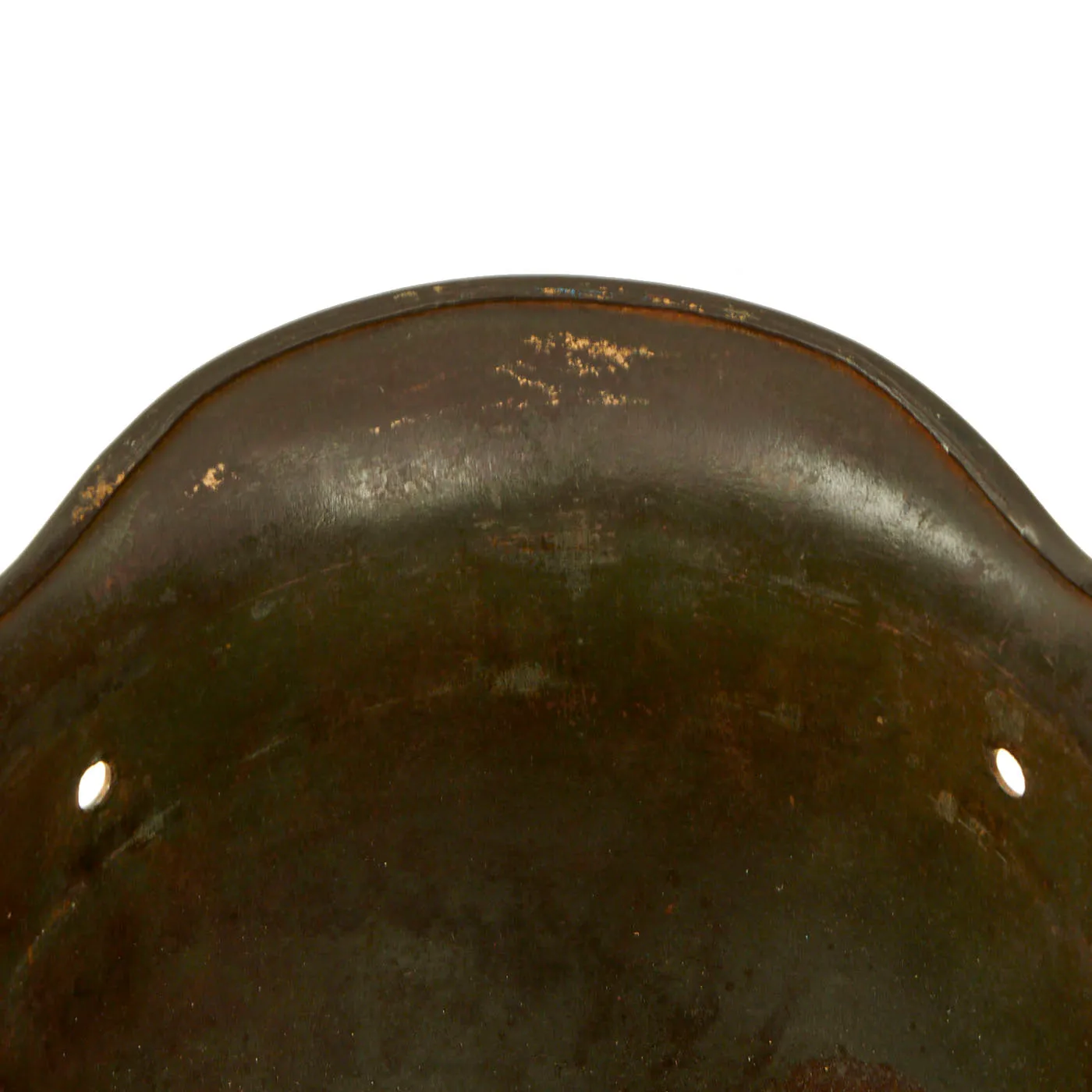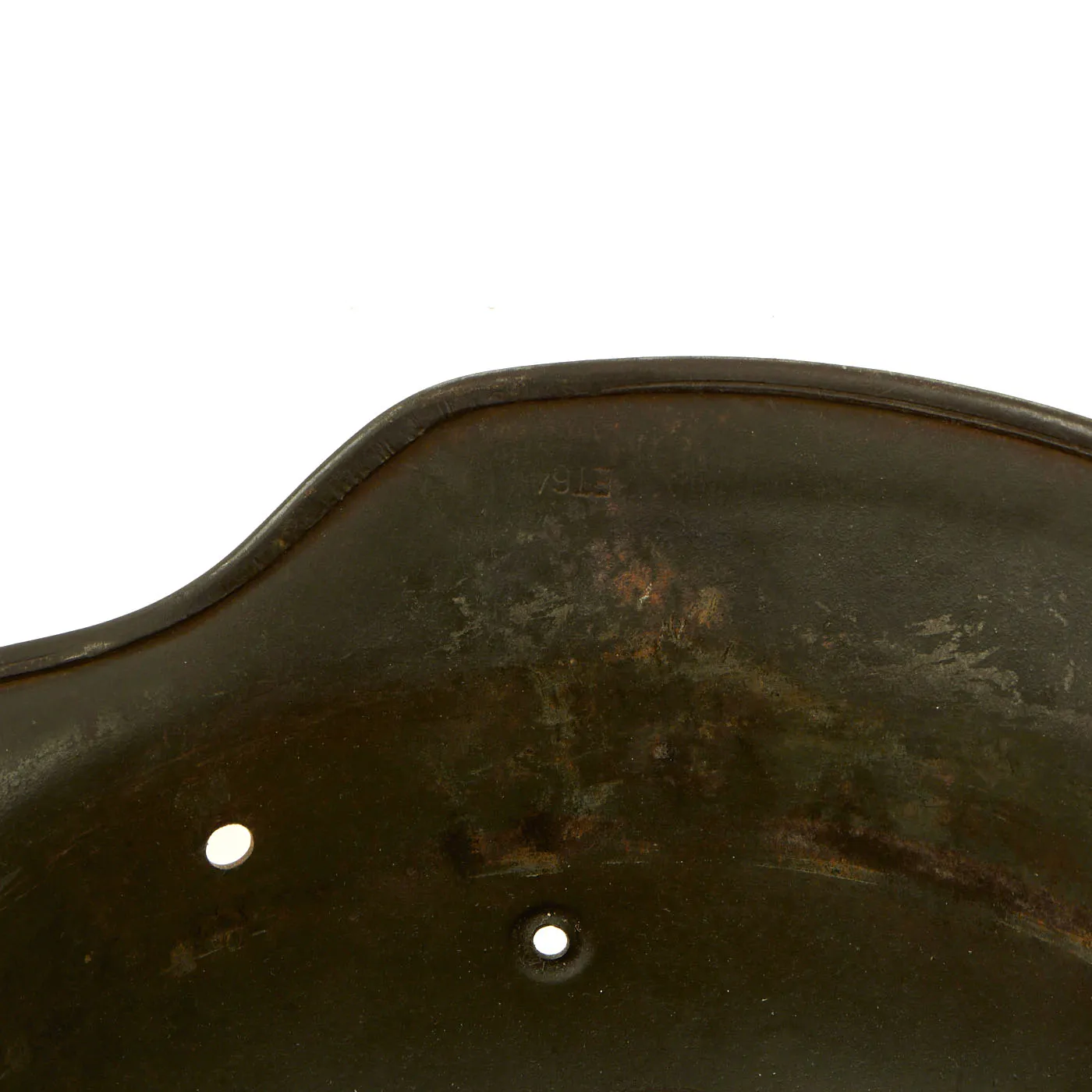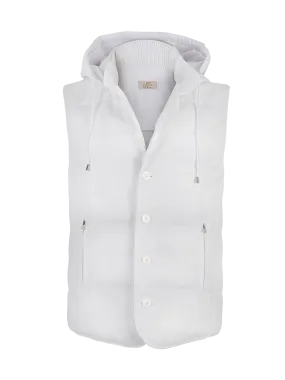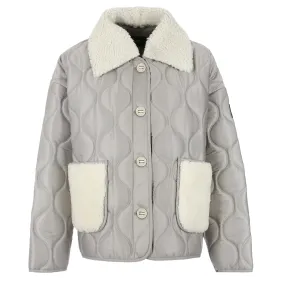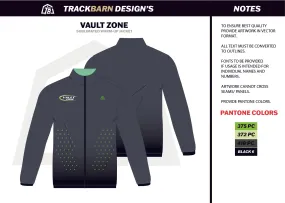Original Item: Only One Available. This is a very nice all original "battle damaged" example of a German WWII M40 helmet shell, as issued to the Heer (Army). It shows lovely period service wear in the form of chipped paint and oxidation on the shell of the helmet. It most likely saw service for a long period, but does not appear to have been repainted at any point during the war, or after. The upper left of the shell has a large dent and a crack, and looks to have taken several heavy blows in that area. The liner for the helmet is completely missing, including the split pins.
This stamped sheet steel construction helmet shell retains 50% of its original paint, which actually looks to be early war Apfelgrün (apple green), replaced soon afterwards with a more blue gray mix. The left side of the helmet features a worn Heer eagle decal, which is retained about 75%. There are areas of rust speckling on many areas of shell, inside and out. This is a very nice example of a "Battle Damaged" M40 helmet, with a great service worn look that is impossible to duplicate.
The reverse, interior, neck guard apron is heat lot number stamped 959 and the interior, left side, apron has the stamped manufacturer's code and size, ET64 indicating that it was manufactured by Eisenhüttenwerk AG of Thale, located in the Harz district in Saxony, Germany. Size 64 is a nice medium size that can accommodate liners from 56cm to 57cm or US 7 to 7 1/8. Size 64 shells are harder to find and are therefore more valuable to a collector.
Overall a very interesting 100% genuine battle damaged M40 Single Decal Heer Army helmet shell , with a great service worn look! M40 helmets of this quality are always the hard to find on the market. This is an item that will only continue to appreciate in value over time.
The first "modern" steel helmets were introduced by the French army in early 1915 and were shortly followed by the British army later that year. With plans on the drawing board, experimental helmets in the field, ("Gaede" helmet), and some captured French and British helmets the German army began tests for their own steel helmet at the Kummersdorf Proving Grounds in November, and in the field in December 1915. An acceptable pattern was developed and approved and production began at Eisen-und Hüttenwerke, AG Thale/Harz, (Iron and Foundry Works), in the spring of 1916.
These first modern M16 helmets evolved into the M18 helmets by the end of WWI. The M16 and M18 helmets remained in usage through-out the Weimar Reichswehr, (National Defence Force, Circa 1919-1933), era and on into the early years of the Third Reich until the development of the smaller, lighter M35 style helmet in June 1935.
In 1934 tests began on an improved Stahlhelm, whose design was a development of World War I models. The Eisenhüttenwerke company of Thale carried out prototype design and testing, with Dr. Friedrich Schwerd once again taking a hand.
The new helmet was pressed from sheets of molybdenum steel in several stages. The size of the flared visor and skirt was reduced, and the large projecting lugs for the obsolete armor shield were eliminated. The ventilator holes were retained, but were set in smaller hollow rivets mounted to the helmet's shell. The edges of the shell were rolled over, creating a smooth edge along the helmet. Finally, a completely new leather suspension, or liner, was incorporated that greatly improved the helmet's safety, adjustability, and comfort for each wearer. These improvements made the new M1935 helmet lighter, more compact, and more comfortable to wear than the previous designs.
The Army's Supreme Command officially accepted the new helmet on June 25, 1935 and it was intended to replace all other helmets in service.
More than 1 million M1935 helmets were manufactured in the first two years after its introduction, and millions more were produced until 1940 when the basic design and production methods were changed, replacing the multi-piece riveted vent with one stamped directly into the steel. Later, in 1942 the rolled steel rim was removed from the pattern to further expedite production.




